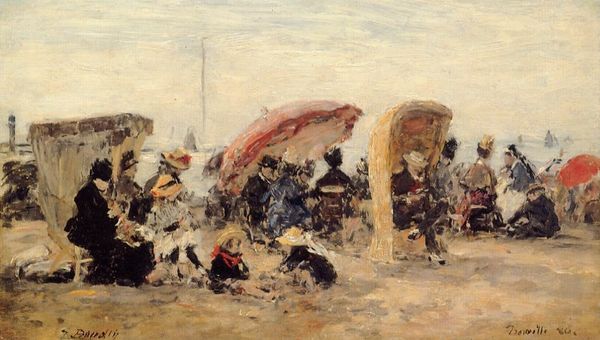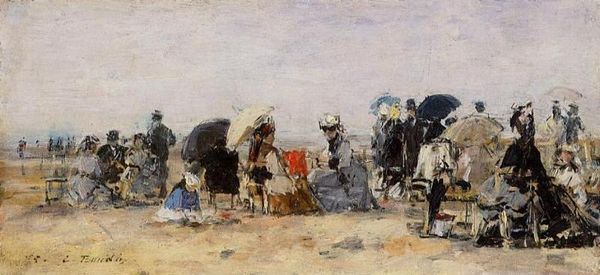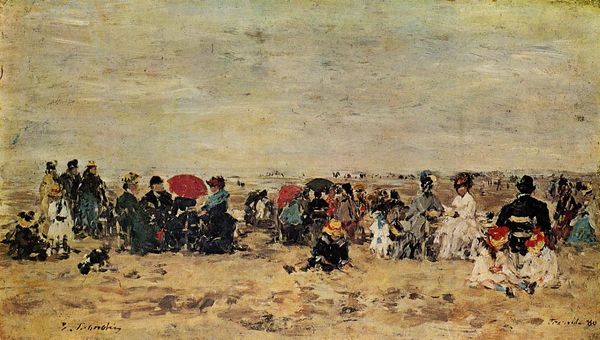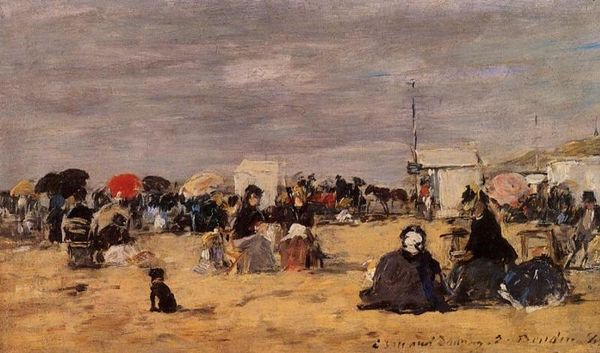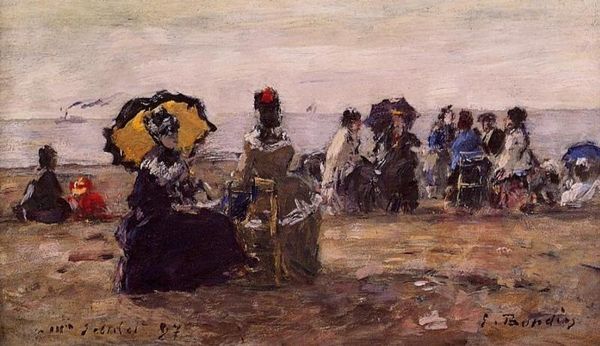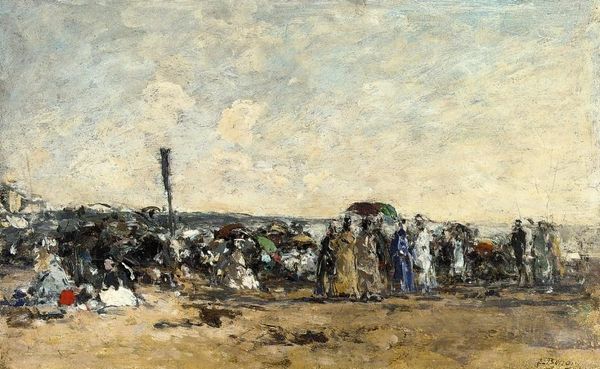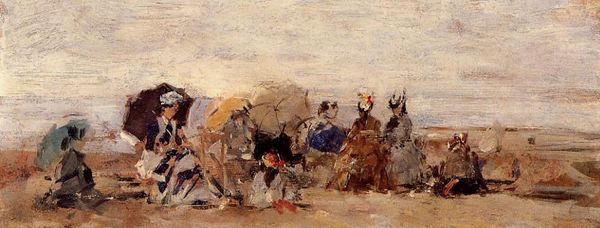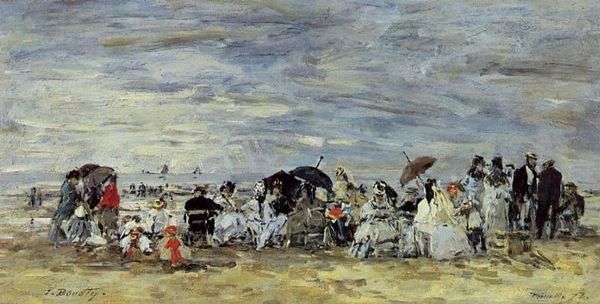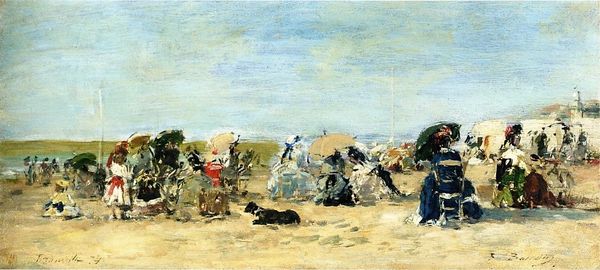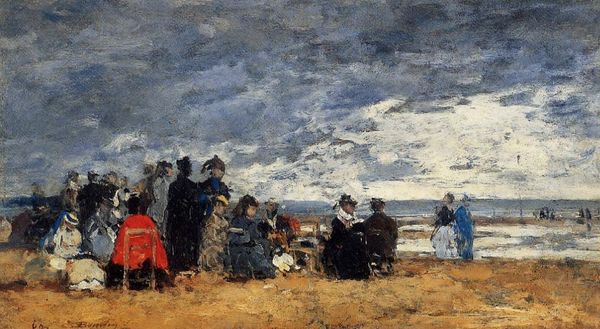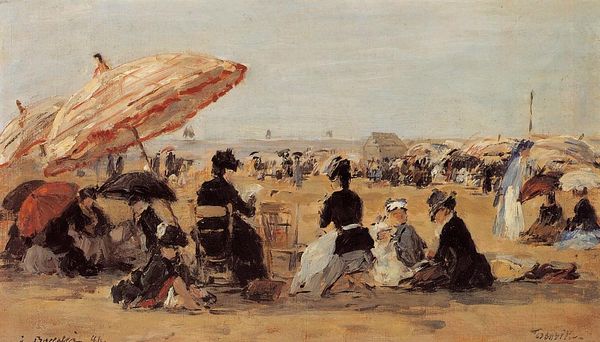
plein-air, oil-paint
#
impressionism
#
plein-air
#
oil-paint
#
landscape
#
figuration
#
oil painting
#
genre-painting
#
watercolor
Copyright: Public domain
Curator: What strikes me immediately is the impression of light, how it filters through the umbrellas and illuminates the figures on the beach. It's remarkably evocative, isn't it? Editor: It’s quite evocative, certainly, but what catches my attention are the brushstrokes, the very evident manipulation of oil paint to depict, presumably, a beach scene. One can almost feel the grains of sand embedded in the surface, such is the thickness of the application in places. I imagine this work was crafted ‘en plein air.’ Curator: Indeed. This work is called "Beach Scene" by Eugène Boudin, painted in oils, but without a specific date attributed. The use of "plein-air," painting outdoors, was central to Boudin's approach. How might the social context inform his choice of technique and subject? Editor: We can speculate, reasonably I think, on how new technologies might impact Boudin's chosen art. Mass produced canvases, paints premixed, travel via railways: the production of art itself becoming easier, commodified. I imagine this gave the leisure class increasing access to the coast and leisure, which became visible in artworks such as this. Curator: The accessibility you highlight is a vital aspect. It certainly opened new vistas of artistic exploration, even if we must also recognize the selective gaze often centered on middle and upper-class pastimes, like the people depicted. What sort of statements were museums communicating at this period, as a direct result? Editor: The presentation of beach scenes at museums reflected and amplified societal values: luxury and leisure celebrated publicly. Boudin likely intended to capture a fleeting moment and also sell art to the very leisure class being represented. He could create paintings both accessible to them, but also challenging some of the long-established traditions around subject and material. The way he depicts their finery suggests a certain awareness of societal posturing. Curator: You raise such compelling contradictions, and how he both upheld and possibly undermined certain cultural norms. Looking closely at Boudin's use of color and his impasto application... it offers a glimpse into his working methods. We can see those layers, decisions made spontaneously as the scene unfolded before him, suggesting it was executed, in part at least, on the location of the scene itself, the materiality shaping our vision and values about place. Editor: This analysis highlights the importance of considering the production and public display to truly grasp the layers of meaning embedded within it. It’s a testament to the artwork’s layered depth, how material choices and production impact public reception.
Comments
No comments
Be the first to comment and join the conversation on the ultimate creative platform.

